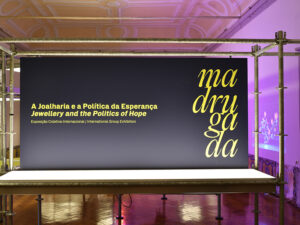Two projects supporting women who are both artists and mothers have been evolving on two different continents with a shared purpose. The Mother Load is a US–based initiative started by Lesli Robertson and Natalie Macellaio, while Mother Makers, started by Laura Bradshaw-Heap and Laurie Schram, is based in the UK and Europe. Both projects, however, are international in their outlook and network reach. Sandra Wilson talks to them about the aims of the projects and tackling issues of money, support, and recognition.
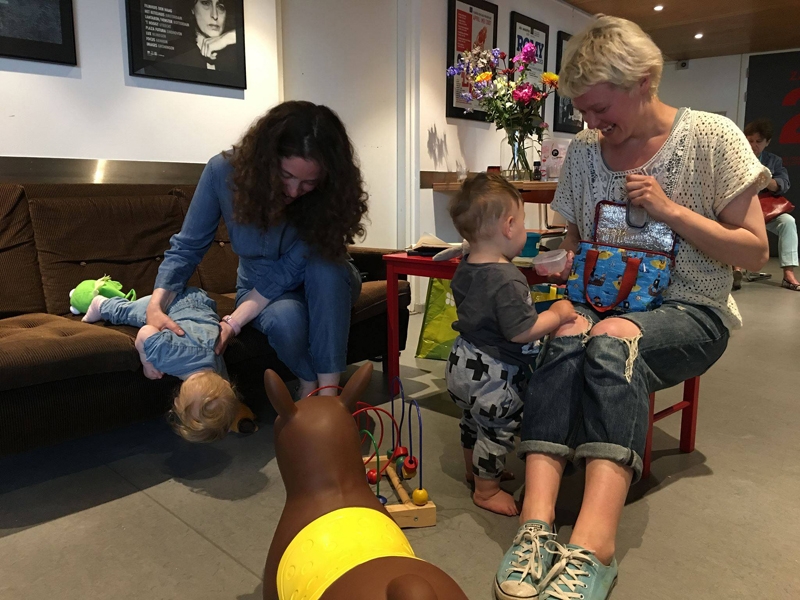
Sandra Wilson: When were these projects established, and what was the impetus for starting them?
The Mother Load: We started The Mother Load in 2012. We had both attended graduate school together, then began our respective careers in higher education while being members of an art collective, 500X Gallery, for several years. In 2009, Lesli had her son, Liam, and two years later Natalie had her twins, Milo and Fina. Although we had been friends for many years, it wasn’t until the birth of our children that we understood that we needed a support system, and one specific to women who had both art and motherhood in their lives.
During the summer of 2012 we started to meet regularly, deciding to simply get in the studio and make. We began by creating small-scale jewelry pieces, combining concrete, silver, and textiles. This jewelry line is called Trestle Designs and it helped to fund our next collaborative project. It was an intersection of both our practices and was a time for us to make, talk, and feel that we were moving forward in our studios when we didn’t feel we had the energy. Lesli had an upcoming exhibition in 2013, so we decided it was time to take the conversation out of our studios. We wanted to create something that would give us the platform to reach out and find other artists who were mothers and build a wider network of support and understanding. We decided to create The Mother Load and build from there.
Mother Makers: Mother Makers started in 2017. It came out of a frustration and optimism we discovered we both shared. We said, “OK, let’s do something, then!” and we did. We felt dismissed and seen as having opted out, as if motherhood was synonymous with not being a professional. That was never the case. We also felt the richness of the experience of motherhood was underrated as a creative force. Since starting Mother Makers, we have found many artists believe motherhood to have benefited their practice in the long run.
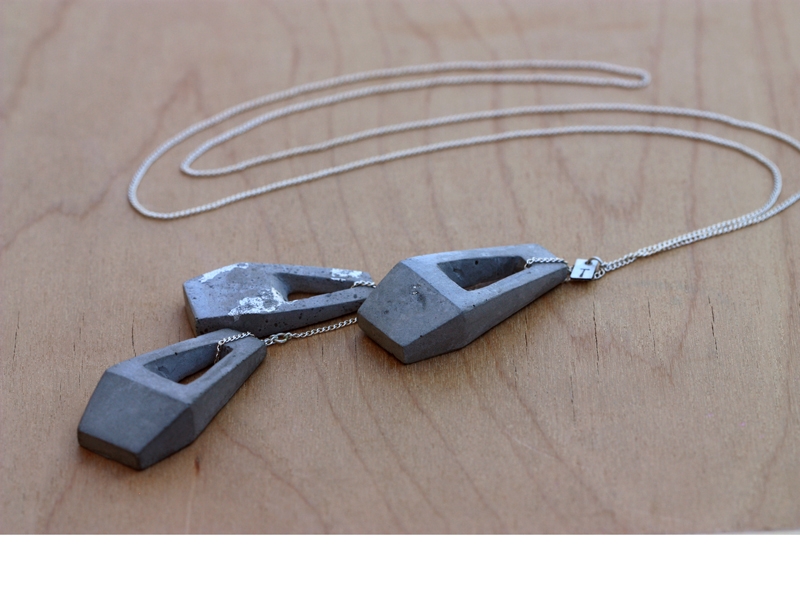
So far, what kind of strategies/opportunities for supporting women have started to emerge from the projects?
The Mother Load: For us, it was important to create a platform, both physically and digitally, where we could explore our work as artists and our role as mothers. We had the opportunity to exhibit this project in the US and Scotland in 2015 and 2016. Both exhibitions had interactive elements, promoted the works of mother artists, and involved the community through lectures, workshops, and other forms of outreach.
Through our website and Facebook page, we have continued to add to our list of resources, linking to other artist/mother projects and exhibition opportunities locally and globally. We’re excited to see other projects emerge, and we continue to support and promote them, such as Kate Fisher’s Both Mother and Artist. We’re always hoping that these conversations will continue to be a part of the main conversation and not on the fringes.
Mother Makers: We offer exhibition opportunities, are establishing a positive image of mothers in the field, and provide some community. We’re finding a lot of women coming “out of the closet,” so to speak, as mothers are feeling less afraid of that part of their identity being known. That in itself really describes the need for changes in how motherhood is viewed in our field.
Exhibiting and sales opportunities are very much needed, but this has been harder to provide as we’re both based in different countries. Creating an online presence has had a much bigger impact than we ever imagined. We feel it has the potential to reach a far larger audience, and as such we have been investigating various ways to grow this. The most positive outcome of our activities is that people are emerging out of isolation, and have begun discussing their attitudes toward motherhood’s visibility within the arts, and they are supporting each other. Visibility within our field is essential.
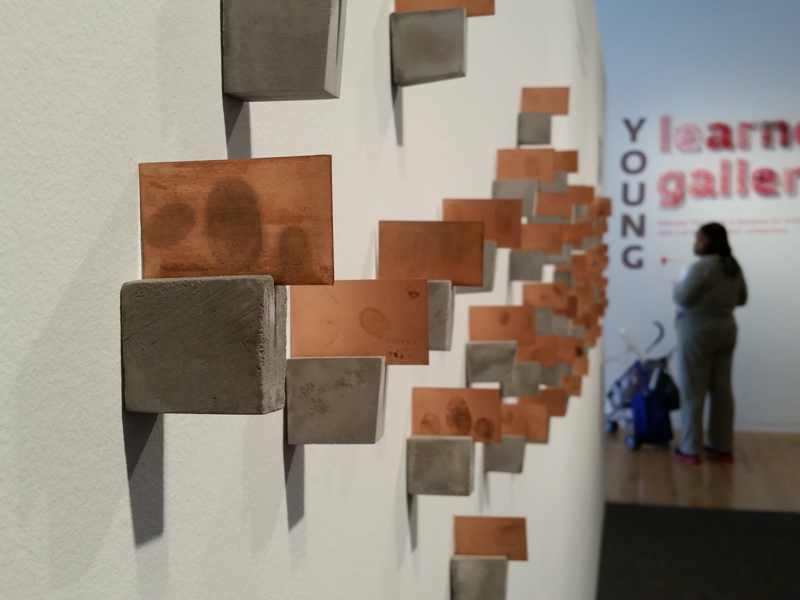
What has surprised you the most, coming from your projects?
The Mother Load: For us, it was the unexpected relationships we were able to build across cultures. We sat down one day to chart the growth of our project and visually see how one person led us to another, then to another, and so forth. For example, through happenstance we met Mary Trunk (US), who connected us to Rebekah Tyler (New Zealand), who led us to Nina Rodin (Switzerland), on to Jayne Wilton (UK), to Kim Thornton (UK), who eventually led us to Cadi Froehlich (UK). From one connection, we were able to meet five women in three countries, and, through Skype, have the unique opportunity to speak about our lives. It was beautiful to see that even if you feel isolated at times, there’s potential for us to be a part of such a large and connected network of women who want to give encouragement, support, and validation.
The timing of this project has given us the ability to reach out in a way that women’s movements had not been able to before. Being a part of the digital age has allowed us the use of social media, free communication, and access to a global society of like-minded women. It has connected us beyond our 100-mile radius to places and corners around the globe. However, we would not be in the position we are as women, artists, and mothers if not for so many generations having already fought for equality, recognition, and support.
Mother Makers: What has surprised us the most is the gendered thinking internalized by both men and women. Sometimes it’s harder to convince women that a workplace suited to women and their needs and choices is possible. We seem to get stuck wanting to fit perfectly into a male-oriented world as female artists. In our field, the vast majority of makers are female; all the more reason to make it an environment where women feel comfortable making choices about family planning.
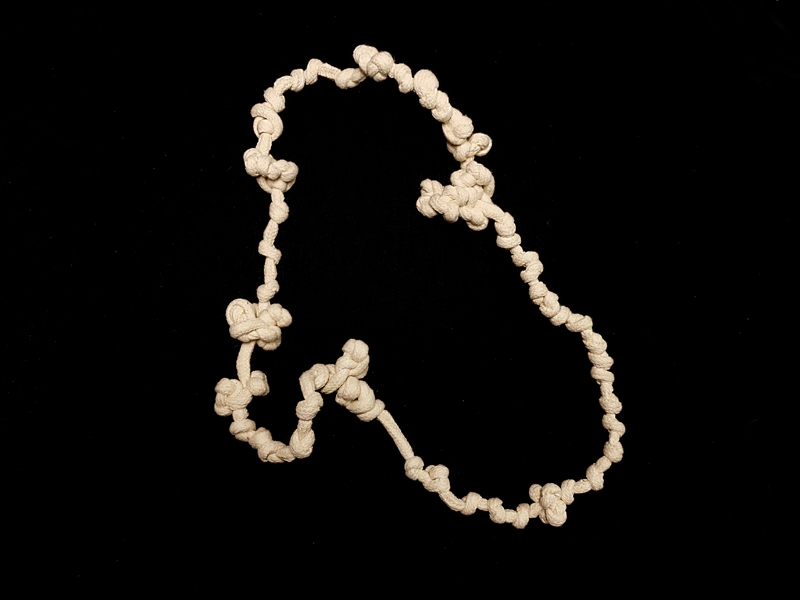
What changes would you like to see in childcare provision that would support mother artists/makers in their art practices?
The Mother Load: This is a challenge because there’s very little support in the US for the arts, and even less childcare support for working families. This is a difficult combination of two of the most underfunded elements of our society. Not to be bleak, but in all honesty, it doesn’t exist in government or corporations at levels that would make a dent in the need that’s out there.
There are nonprofits and other entities working toward this, but currently there isn’t a push for government-funded day care, it’s only through private businesses and nonprofit that women might be able to find this support. Also, there’s still a stigma that each of us has personally felt, one that goes to the core of being an artist, and one that we hope will change moving forward. We battle both internally and externally the justification of what we do and why it’s important. Pursuing a career in the arts means you have to invest not only yourself but your time to develop successful works. Both of us have continued to feel the need to justify this time, our focus, and the energy that we choose to put into our practice.
Mother Makers: We need subsidized childcare, that much is clear, but it’s interlinked with our profession being taken seriously and our work being seen as work. That’s a really difficult thing to pull off, especially in a political climate that doesn’t leave much space for the arts in general. But there are so many other smaller things that we can do which require a small mind shift rather than a huge pot of money for artist mothers. For example, events could take place in the daytime so that mothers can actually come, you can put a play kitchen or toys in your space so that kids can be brought along and find something of interest. Focusing just on childcare, though absolutely needed and essential for making, misses some really great opportunities in terms of opening up to the needs of parents. Museums are really good at this because they know they rely on children as their audience. A lot of their strategies could also work in other contexts.
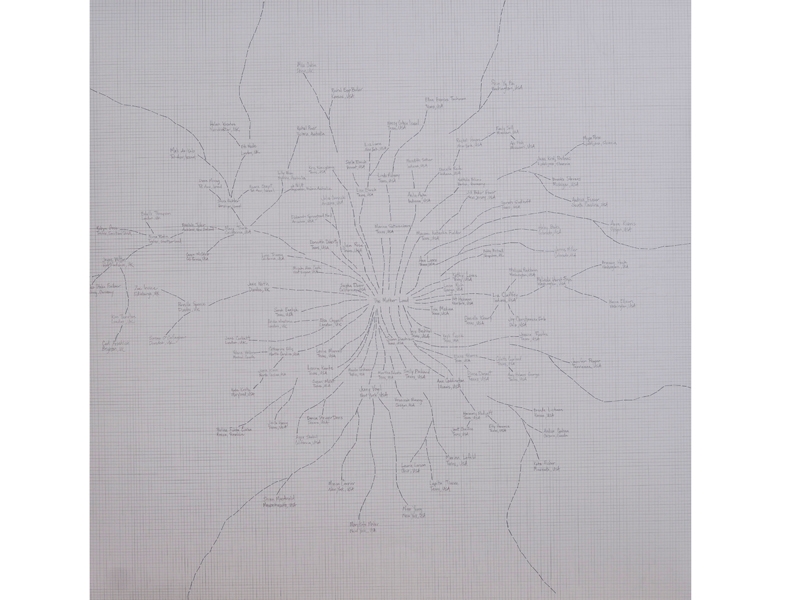
There’s been a lot of discussion recently about the idea of a “guaranteed minimum income.” Is this something that you think could benefit mothers and their art practices?
The Mother Load: In an ideal world, definitely so. As an artist, you’re continually looking at how you’ll support your practice. For The Mother Load, we decided early on that pursuing grant support for this project meant that we would be fighting for the very small funds available for artists, and even more so for community-based arts. We decided that what brought us together in the studio in the first place, the making of Trestle Designs, could support this project. We were able to bring in enough income to support much of the project, from materials to shipping work to designing and establishing the website. It gave us the freedom to know that we can financially support our efforts.
But we’re a bit sceptical whether this could even be a reality. There are many things to continue to resolve, such as closing the pay gap between men and women and guaranteed maternity and paternity leave for the first year. We look to those things that could be possible in our career lifetime.
Mother Makers: We feel guaranteed minimum income is key for a healthy society, one in which domestic work has a monetary value. However, this isn’t enough to provide the support families need if childcare remains too expensive and difficult to obtain. The provision, by state, business, and institutions, of more subsidized childcare is key. Mother Makers is very interested in the development of studio spaces that have integrated childcare (see Procreate Projects’s recent trials of the Mother House) and we feel that this could offer a real positive step forward both for women who have children and those who are considering having children.

As women who are mothers strive to keep making, they often consider changes in their practice, such as the scale they work in and an increased focus on the local. What other personal strategies do you feel women adopt?
The Mother Load: Every single woman who we have come across has talked about how her practice has changed and continues to change based on the age of her children and where she is in her career. Each artist is unique in her professional life, support systems, and how she chooses to handle the logistics of staying purposeful in her practice. We’ve seen that the common ground is that as they raise their children year after year, women’s practices evolve and change alongside their children. At times we have found that artists want to work more inclusively, with a community or in collaboration with other artists, and that they want to ensure their work has a greater purpose.
Mother Makers: One of the biggest challenges parents face is time management, and particularly studio time. As more demands are put on your time, energy, and space, it’s key to find ways to manage that little bit left to create. Learning to work in smaller chunks of time over longer periods is important, sometimes using only 10 minutes here or there. For some, this is the only time there ever is. Bringing the studio closer to home and adapting tools and materials to be more child-friendly, to make working within the home possible, also happens a lot. These things have an impact on the kind of practice a mother has. Shifts occur between process-led and concept-led work. Some mothers feel mentally more sharp but have less time to make, while others are able to let their hands lead the work but have less mental space left. These are healthy challenges for an established maker. They force us to distill and edit down to the very essentials.
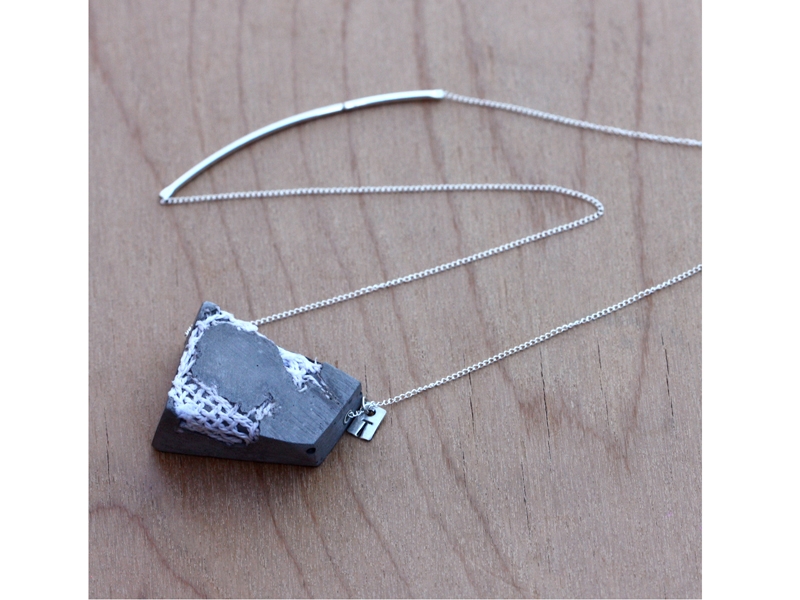
Who are your favorite artist/mothers?
The Mother Load: To answer this, we’d like to focus locally on our own support system of artists. We are fortunate to have Ana Lopez and Dornith Doherty as mentors, colleagues, and friends. As we continue to work on this project, we keep finding women whose work we have admired over the years and who we recently found out are mothers. These include Janine Antoni, Phyllida Barlow, Ann Hamilton, Kara Walker, Sheila Hicks, and Liza Lou, to name a few.
Mother Makers: We highly respect all the mothers we have interviewed for Mother Makers, and how each one has found her own way to progress and grow her career. A historical figure we hugely admire is Barbara Hepworth. In our interview with Liesbeth den Besten, she talked about how the average number of children for the female jewelers she knows is 0.68, while the average number of children per woman in the Western world is closer to 1.5. Barbara Hepworth became one of Britain’s leading sculptors while having four children—three of which were triplets. Triplets! If this doesn’t prove that having children does not in fact kill a woman’s creativity and ability to produce high-quality work, I don’t know what does.
In what ways do you think your projects are getting mother artist/makers greater recognition for their work?
The Mother Load: It’s not about our individual projects, it’s about the collective efforts that are happening across the board. We are among many who are focusing on motherhood and making. After creating The Mother Load, we found a personal freedom to have the conversations outside of our studios. We felt we could professionally discuss all aspects of our lives, from raising children, gaps in resumes, shifts in concepts and making, and more. It’s inspiring to be on panel discussions, in classrooms, and in galleries to challenge new audiences to see this duality as a possibility. We have been able to clearly and definitely establish that motherhood and art are able to co-exist in our lives, they are productive together, and are a valid conversation to bring into galleries, institutions, and academia.
Mother Makers: Greater recognition requires more sustained action over a much longer period of time. We can make this issue visible, we can be present, but we cannot force people to see value in us when they don’t. Gender inequality is still a huge issue and endemic, so we can’t afford to wait to be valued by an external force—we must be the ones doing the valuing.
The immediate issue is less about greater recognition for individual artists, and more about opening up a debate about why it has in the past been the norm to keep motherhood in the private sphere. Regardless of how private a choice it is for us as individuals to have a family, how our choices are perceived, received, and validated is a public issue, and one we need to be proactive about. Ways forward include making the workplace more accessible to different ways of working that are more sensitive to the needs of those who need additional support. Having a family inherently changes how parents work—most so the mother. Time management, materials, tools—all can be affected depending on our individual situation. Yet often after childbirth, women feel the need to continue their careers as if they don’t have a family. Giving space to that makes it possible to be there and be a part of the discourse. Without presence, there is no representation.

What male/partner interest have you found in your projects?
The Mother Load: None. We decided from the beginning to focus on mothers in the arts rather than parents in the arts, and all of our efforts, from naming the project to choosing who we engage with, was about centering on women. From numerous conversations with other artists while launching the project, we continued to find a contrast between the way men and women experienced being parents while working in creative professions. This was our opportunity to give a very focused voice.
Mother Makers: This is a great question. Our Instagram account is followed by about 94% women. While we do have a small male audience, it is minute. I think by branding ourselves as advocates for mother’s issues, we will immediately lose some male audience, and also some women who, for whatever reason, are not mothers. We aim to showcase a high level of quality that is on par with male work, but as one of our followers explained it, “This is for us—who cares if there are people who are not interested? There are plenty of us.”
It’s quite refreshing to let go of this idea that you need to be relevant to everyone. No white male artists are asking themselves whether or not mothers will appreciate their work. We need to set ourselves free from the idea that something isn’t valid until men take an interest.
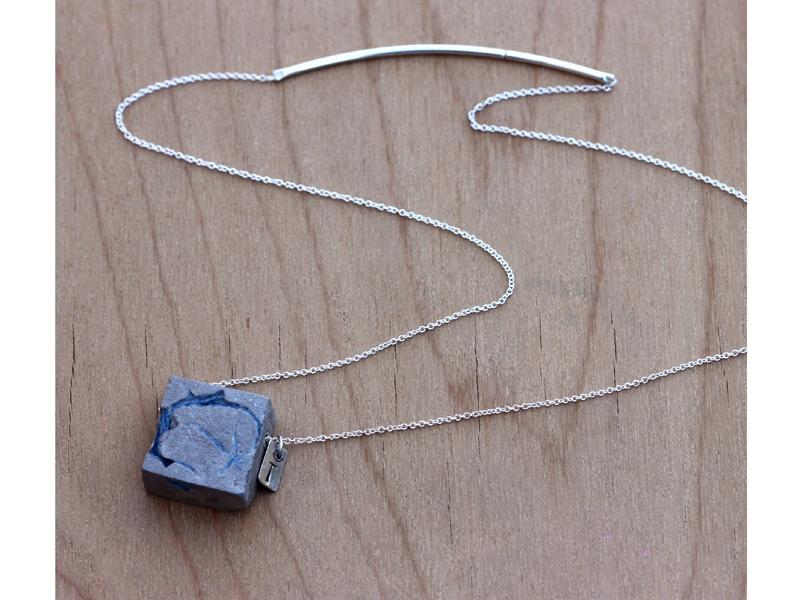
Mother Load, you are working on an anthology—how have women artists responded to the call for essays?
The Mother Load: When we sat down in 2017 to look at the last five years of The Mother Load, we asked whether we were a success. Did we push the project hard enough, did we stay up late enough, reach out to enough people, put in enough effort? Also, did we exhibit it enough, find enough venues to show it? There was really no answer, because if we held The Mother Load up against another project, or artist, or metric for gauging artistic success, we couldn’t clearly define whether it was a success.
It got us thinking about how women as both artists and mothers must question their roles and work, like we were doing. We knew that this had to be our next step of The Mother Load. We partnered with author Maggie Messitt and stepped into yet another unknown for the project. We were quite overwhelmed by the response for the call for submissions sent out in October 2017. We received over 120 abstracts and were very moved to read through the thoughts and stories shared by the artists on what success meant to them.
Mother Makers have been exhibiting at Munich Jewelry Week—what was the response to the show?
Mother Makers: We have had a wonderful response. It was really heartwarming to see that students especially were very interested and happy to find that we’re out there and they don’t have to remain childless in order to do what they love. We don’t promote motherhood in itself, of course. Not having children is just as valid a choice, and for some women these things are not choices at all. It’s wonderful to see how activism can make a real difference to someone who is struggling with how she sees herself and her future. Some of our audience feels that we need to be more political, while to others we seem quite radical already!
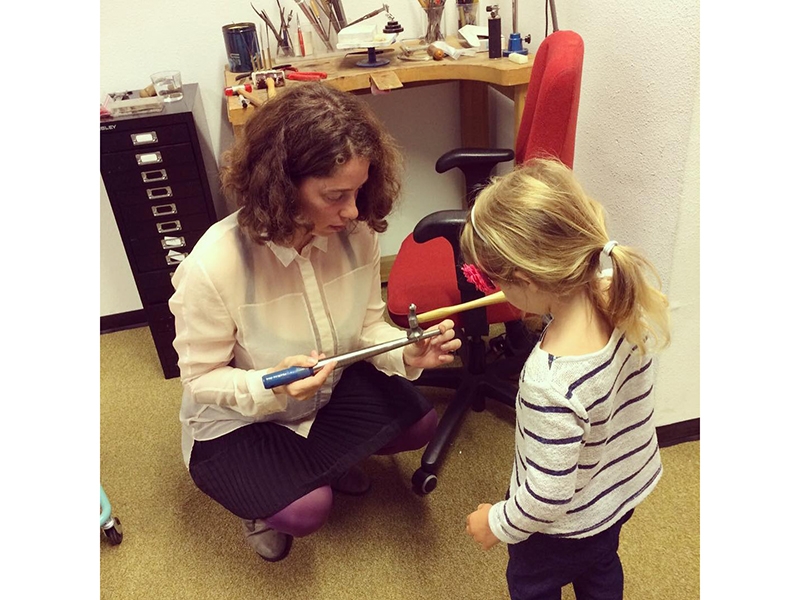
What plans have you got for the future of the projects?
The Mother Load: We’ll continue to develop the Anthology in 2018.
Mother Makers: We have a number of things in the pipeline, the main being to find more ways to collaborate with other mothers on projects. We have plans for exhibiting again in Munich and getting more artists to work together. We both have a constant battle between our masses of enthusiasm and ideas and the reality of the amount of time we can give, but we’re excited to keep pushing Mother Makers in new ways and to keep finding ways to help make motherhood more visible within art and design.
Thanks for raising these important issues and good luck with the next phase of both projects.
Resources
The Feminist Art Project
Creative Capital has professional development resources for artist parents.
Cultural ReProducers is a one-stop shop for all types of mother/art resources.
A few books not listed on Cultural ReProducers
Nobody Told Me, by Hollie McNish
Living and Sustaining a Creative Life, by Sharon Louden
The Artist as Culture Producer: Living and Sustaining a Creative Life, by Sharon Louden


